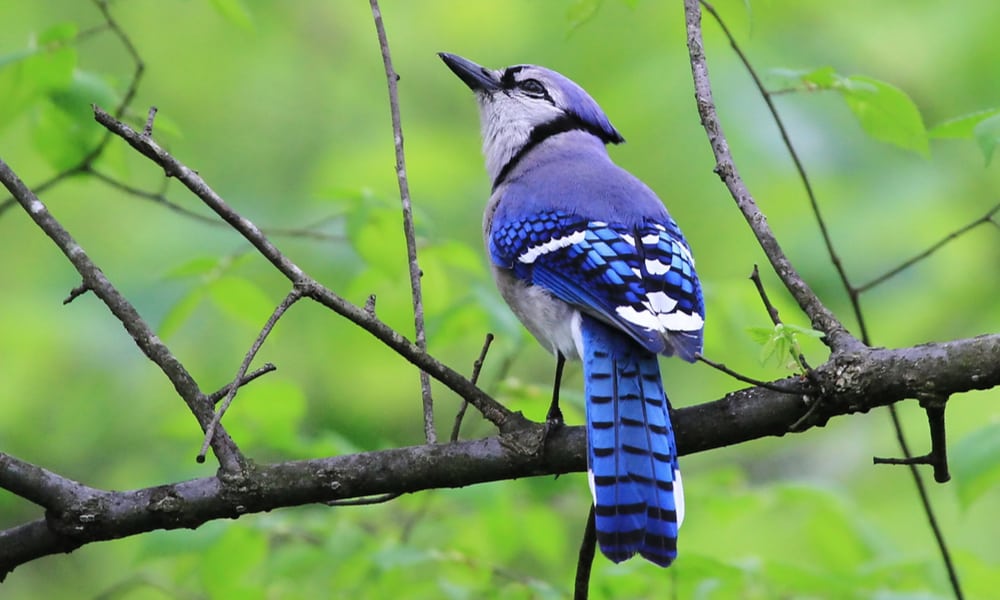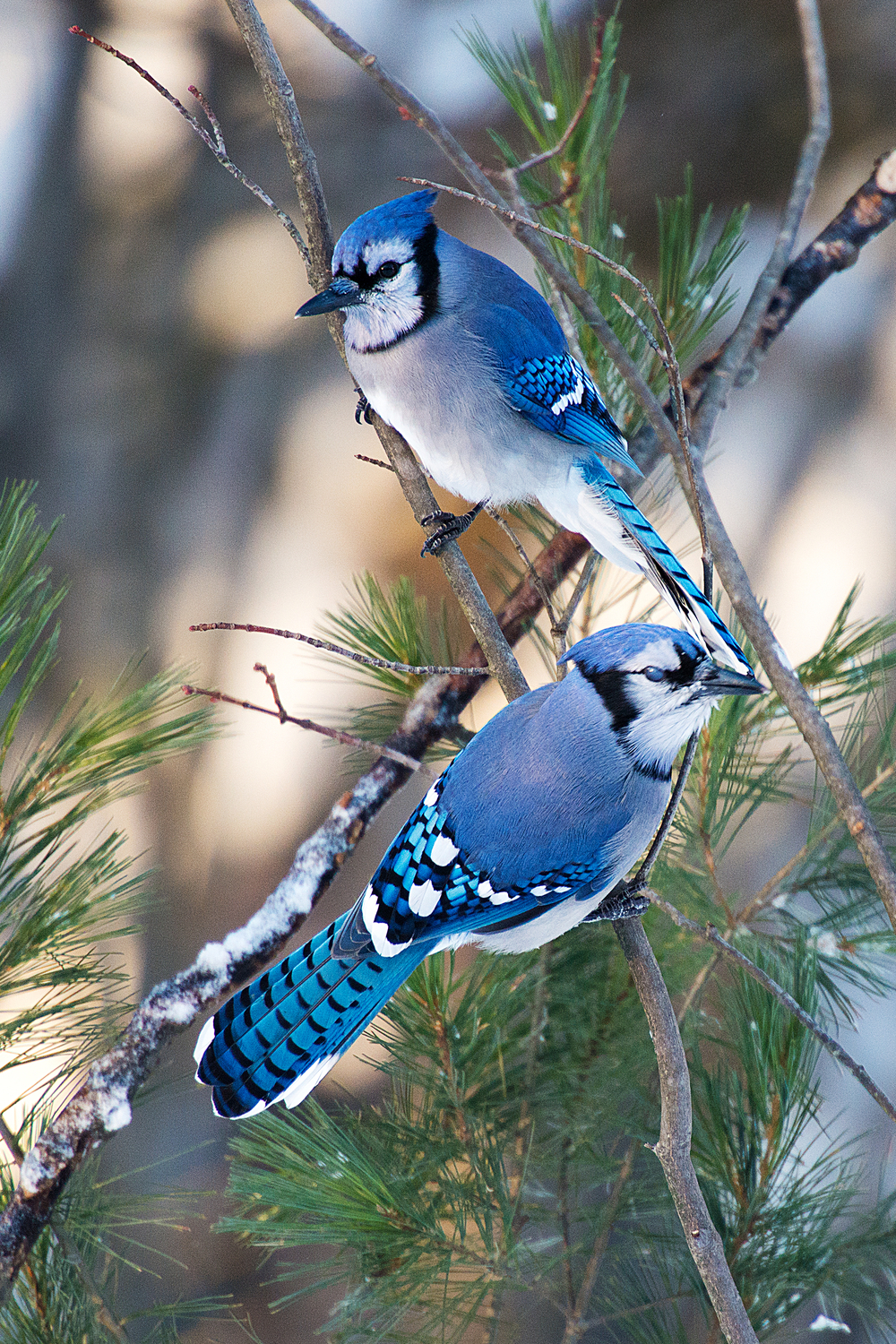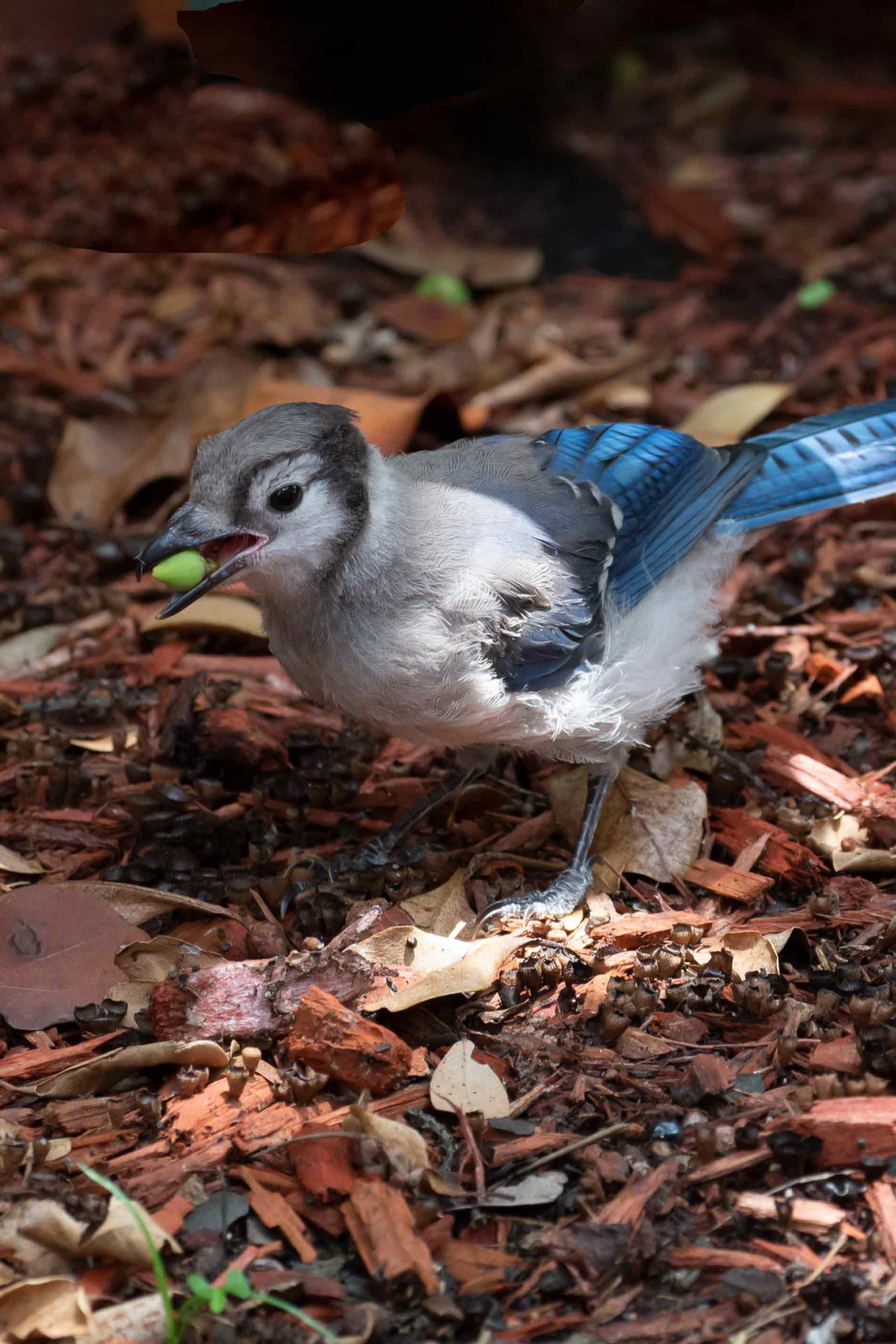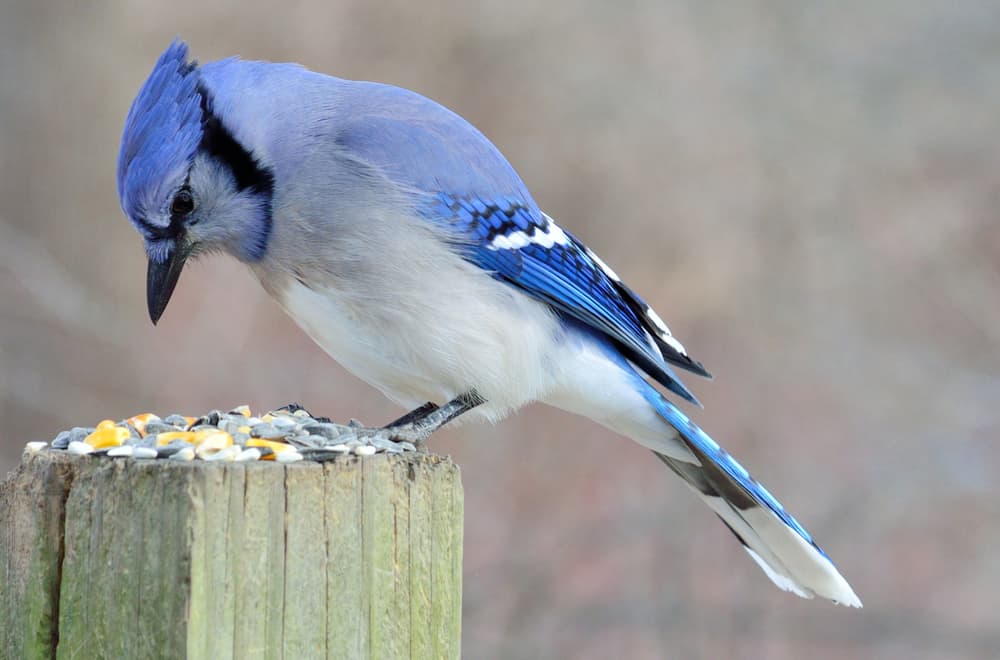If you have some poultry in your backyard, you have probably seen blue jays hanging around the feeders and asked yourself, “What do blue jays eat?”
Blue jays’ diet consists primarily of plant products, insects, and small vertebrates. We’ll look more into this shortly but first, let’s learn blue jays’ physiology and general life in the wild.
Blue Jay Habits and Biology
Blue jays are small, songbirds originally from North America. As the name hints, these birds mainly have blue feathers with a brilliant white chest and underparts. Their crest is also blue in color with a black border behind it. They also have a dark collar around their neck.
Jays can be found near almost all tree species but they are more prevalent where there are oaks. Also, they don’t like the deep forest; you will mostly find them near forest edges. The majority love the urban and suburban life too and you will find them roosting on oak trees or foraging near bird feeders.
These birds are known to have strong family bonds. Once they have found a mate, they will remain with them throughout the year. During incubation, the male provides all the food for the female, and for the first one week or two after the eggs have hatched, the male continues to provide food while the female stays in the nest to brood and protect the nestlings from predators.
Blue jays communicate with each other vocally or by moving their crests. They are quick learners and when kept as pets, they may even learn how to imitate sounds such as human speech or meowing cats.
In the wild, jays may mimic hawks to chase other birds away from their food so they can take over the food.
When the birds are agitated, they will make a high-pitched “jay-jay” call that will increase in speed as they get angrier. Blue jays will usually make this call to band together especially when they see a predator; it helps drive the predator away.
Watch this video to learn more about blue jays and their behavior:
Important: While some people keep blue jays as pets, jays should not be domesticated. Jays like all songbirds are protected by law and it is illegal for homeowners to trap and keep them as pets.
What Do Blue Jays Eat in the Wild?
Blue jays are omnivores, meaning, they eat both plants and animals. They will mostly eat food items they find on the ground, on trees and shrubs, and in other birds’ feeders. Jays will use their bills to pound on hard seeds and nuts to break them open.
They will also harvest acorns from oak trees and hide them in holes that only they can find. Jays will usually carry nuts in the gular pouch or their esophagus. They will tuck them under leaves or grass or bury them in the ground for later. In some instances, the hidden nuts eventually become trees.
To learn more about blue jays’ eating habits, watch this video of blue jays feeding on shell peanuts:
What Do Blue Jays Like to Eat?
80% of blue jays’ diet comprises plant and vegetable products such as:
- Nuts (especially acorns and beechnuts)
- Seeds
- Small fruits
- Grains
- Berries
Blue jays also eat small animals like:
- Insects such as beetles, grasshoppers, and caterpillars
- Invertebrates such as snails and spiders
- Small rodents
- Frogs
- Carrion
Jays have been found to raid the nests of other birds too, stealing and eating eggs and young ones of these birds.
How Blue Jays’ Diet Benefits the Ecosystem
- Blue jays’ love for acorns and beechnuts helps facilitate the distribution of oak and beech trees. By burying nuts in the ground, these birds enable a seamless growth of trees in different regions, providing food and a home for other animals.
- Caterpillars and rodents are a large nuisance for farmers and humans in general. By feeding on these, blue jays help bring their population down, enabling proper growth of crops and increased yields. Rodents have also been found to carry diseases; having them under control means a minimized risk for rodent-borne illnesses.
8 Facts About Blue Jays
1. Blue Jays Are Not Really Blue
That’s right! Blue jays have melanin in their feathers, and it is this pigment that gives these birds their color.
But the blue color of jays is produced in several ways. Having melanin is just one way. For the most part, the blue color you see is caused by refraction.
The feathers of blue jays are designed in such a way that when they receive light, the melanin in them absorbs the wavelength of visible light and produces a different wavelength that makes the feathers appear blue.
Try backlighting a blue jay and see for yourself. Without direct light, the feathers will appear brownish (the color of melanin). No blue coloration will be seen.
2. Jays Are Less Noisy in Spring and Summer
Blue jays nest in the spring and the beginning of summer, and during this period, they tend to be more secretive to avoid predators.
However, come fall after the nestlings have hatched, jays will be noisier while foraging for their food and that of their little ones. They will “jay-jay” uncontrollably to stop hawks and other predators from attacking them and their chicks.
3. Blue Jays Exhibit Sexual Monomorphism
Sexual monomorphism is a phenomenon where both the male and female look the same. It is relatively rare in birds; most bird species will have males look different from females, which is called sexual dimorphism.
The only way to tell male jays from females is by looking at their courting behavior. Sexually active blue jays will often move about in groups, and will often determine how any surrounding males will behave. For instance, if the females start to fly, the males will follow and when they land, the males will land too.
4. Jays Can Live for Many, Many Years
Wild birds typically live between 6 and 8 years on average. The number can vary from bird to bird based on the surrounding environment. Of course, if a bird lives in a habitat full of predators, it may not last even a few months.
However, blue jays have been found to live a long time, with the oldest known wild jay being almost 27 years old.
Most of the time, blue jays lose their life to predators or human-made objects. But in recent years, a large number of jays have been found to lose their lives to West Nile Virus and for some reason, blue jays seem to be one of the most vulnerable species to this disease.
5. They Can Mimic Hawks
Blue jays make many sounds and it is not uncommon to hear them imitate hawks. They are especially excellent imitators of the red-shouldered hawk, one of their main predators.
Experts argue that the mimicry serves as an alarm to warn other jays about a nearby hawk. There as some, however, who have found the noises just a way to fool other bird species into thinking that there are lurking hawks so they can abandon their food and the jays can take over. Yup! Blue jays are that smart.
6. Jays Are Noisy Birds
The word “jay” was originally used to describe a talkative person who loved to dominate conversations of other people. This is where blue jays got their name from. They are loud, noisy, and lively and will produce sounds that will make the surrounding bird species seem non-existent.
They have a wide range of vocalizations. Some noises can be a delight to listen to; others can be loud and plain annoying. However, all these sounds serve unique purposes. They will warn other birds of predators and even tell them where there is more food.
7. Blue Jays Fly Slower Than Ducks
You would think that blue jays being aggressive birds will fly fast. Well, that’s not the case. Jays fly leisurely, typically at a speed of about 20 mph. Ducks can reach up to 60 mph.
Because of this, blue jays tend to be an easy target for predators who fly much faster like owls, hawks, and falcons. However, blue jays tend to be more aware of predators in their vicinity and are known to mobilize other jays pretty fast to make sounds that scare these predators away.
8. Jays Are Smart
They belong to the Corvidae family that includes crows and ravens, some of the most intelligent birds. In fact, birds in the Corvid family are considered the smartest animals on the planet.
For more exciting facts about blue jays, watch this video:
Summary
Blue jays can adapt to a wide range of diets, with some of their foods being an important part of encouraging tree growth and increasing crop productivity. Their main diet includes tree matter and small invertebrates but they can also feed on small rodents as well as other birds’ eggs and young ones.




Very interesting facts, thank you!